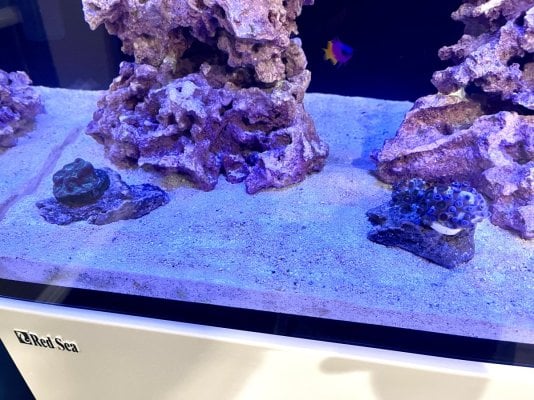My LFS has a huge container of dry ocean rocks next to the dry coral skeletons, so I mounted a couple frags to the ocean rocks and dropped them in the tank about 6-8 weeks ago. I’ve had steady diatom blooms. FWIW, the tank is only a few months old, so I’m not entirely sure if the diatoms are still related to the newness of the tank or if the rocks might be fueling the non-stop diatom bloom by leeching silicates.
I’m scraping all the glass 2-3 times a week and the sand looks atrocious.
Could these rocks be leeching silicates, fueling the diatoms?
I asked the store about this today but the folks working there had no idea. Unfortunately I can’t yank these out of the tank just to see what happens unless I want to try to pry the frag discs off the rock and risk damaging the corals, so that’s a last resort.
Anyone know much about putting rocks like this in the tank? They’re dark in color and do sparkle a teeny tiny bit. Upon close inspection, the rocks appear to have some ancient skeletal remains encrusted within.

I’m scraping all the glass 2-3 times a week and the sand looks atrocious.
Could these rocks be leeching silicates, fueling the diatoms?
I asked the store about this today but the folks working there had no idea. Unfortunately I can’t yank these out of the tank just to see what happens unless I want to try to pry the frag discs off the rock and risk damaging the corals, so that’s a last resort.
Anyone know much about putting rocks like this in the tank? They’re dark in color and do sparkle a teeny tiny bit. Upon close inspection, the rocks appear to have some ancient skeletal remains encrusted within.
















